Introduction
A front-load machine usually refers to an appliance whereby the user will be loading clothes using an opening found at the front side of the washer. The devices have a distinct detergent drawer whereby an individual places the powder to use in washing. One of its benefits is that it is more energy-efficient than other laundry machines such as top loaders. They save on time used for drying because water drains out of the clothes more effectively. In addition, it is environment-friendly since they require fewer detergents, which means fewer chemicals will be released to the groundwater and soil. Its tumbling movement uses less power from the dryer and the washer, reducing the greenhouse effect in households.
Furthermore, this washer has a large drum that lacks a central axis, which means there is typically more space for laundry so that one can fit large loads into each cycle. Furthermore, the washing machine’s whirling motion depends on the gravitational pull to toss the garments over one another within the washer drum, making it rotate faster (Majewski & Ahearn, 2019). This creates increased friction among the items, resulting in a higher cleaning performance using less water. Another benefit is that the washers can be stacked on the drying machine, saving space in the utility room. This factor makes them ideal for smaller homes and apartments and makes it easier to unload and load. The machine uses paddles on the side of the drum and does not have an agitator meaning that they are generally gentle on the loads.
The purpose of instruction and procedure is to enlighten my target audience, both small-scale and large-scale households, of using a front load washing machine, which is a huge time saver. An individual can load the items on the device, begin the cycle, and walk away, so there is no need to sit and monitor the washing process. A user must read the labels since following the listed garments guidelines will increase the machine’s service life. They should never overload the dryer as this may cause a breakdown to the device, and they should sort the clothes by material color, type, and water temperature.
Parts of a Front Load Washer
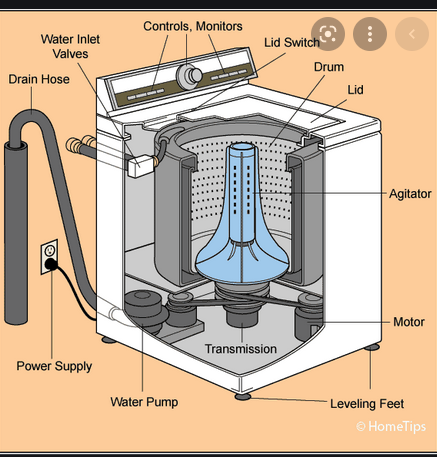
One of the parts of a washer is a water inlet control valve. It is located close to the water inlet point, and it closes and opens automatically when clothes are loaded based on the quantities of water needed. Secondly, a water pump is applied to discharge water in the spin cycle and flow through the wash cycle. The third part is the paddles which are structured to move the fabric during the wash to allow the detergent to function, helping the loads to rub together while washing to remove soiling and dirt particles from the clothes. The heating system boils water up inside the machine to the required temperature. Furthermore, the printed circuit board contains all the electrical appliances that operate the washing machine. It can be automated, serving as the artificial intelligence for the washer, and at times determining the time required for rinsing. After cleaning, all the dirty water is expelled from the machine through a discharge pipe.
Working Definition
The front-load washing machine functions by filling the base of the inner tube with little water and using gravity and rotation of the tub to pass the clothes through the water. The side agitator inside the drum lifts the garments and moves them forward and backward in the water. This gives the cleansing effect required to get rid of dirt from clothes effectively when the cleaning process begins.
Required Steps
Step 1: The user should follow the guidelines on the detergent bottle; for dirtier clothes, they should use more washing powder.
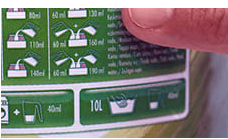
Step 2: It involves placing the dirty clothes into the washer’s drum, ensuring that there is enough space left for the load to move around the wash. If the user’s palm fits between the machine and the fabric, it implies that the device has been loaded correctly.
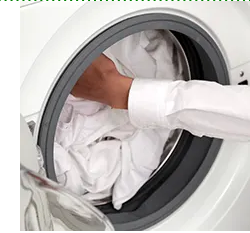
Step 3: This step entails adding a fabric conditioner to the dispensing drawer, and this should be made with caution not to fill past the top line; otherwise, it may not dispense at all.
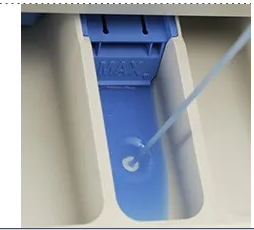
Step 4: This stage entails setting the optimum temperature based upon the labels of fabric care on the clothes. In the case of multiple temperatures, one should choose the lowest one.
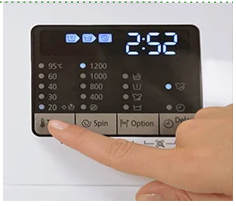
Step 5: This phase involves choosing the correct spin cycle; the durable clothes work better with faster cycles, while delicate require a slower one.
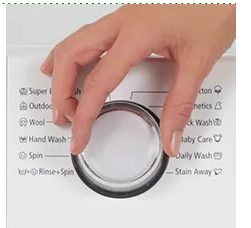
Step 6: This step involves closing the door and pressing to unload the clean laundry immediately for maximum freshness, more preferably at least within two hours of the cycle’s end.
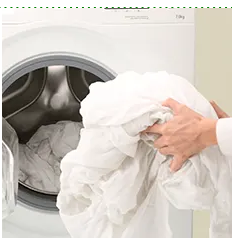
Washing Machine Settings
It is essential to choose the correct settings in the instrument panel for the washing machines because the settings selected may influence the lifespan and color of the clothes. Hot water may give cleaner clothes even though it can cause fibers of the clothes to shrink and colors to bleed. Typically, the user should countercheck the tags on clothing for each item to know its right settings for washing. Some specify their specific temperature settings, while others are recommended to be hand washed. Normal cycles are mostly preferred for sheets, cotton, and linens.
The delicate setting is for light clothing like those written handwash only and silks. Darks is recommended for bright or dull colors in a casual fabric and is mainly designed for dyed items that may bleed. Moreover, heavy-duty is used for large loads of colorfast clothes, sturdy and heavily soiled items, and can be used for blankets, rugs, heavy bedding, and comforters. Super speed is meant for small loads of lightly soiled garments that need to be washed quickly. Lastly, the water is expelled in the spin cycle, allowing the garments to spin off excess water.
Using the Washer
The operator should pile clothes high up, making sure not to cram them beyond the last row of holes at the front while loading. Several steps should be followed while unloading the washer safely. One should use a stool to reach into the washing machine and a folded carpet to protect the knees. This is followed by lifting the basket with a good form, using the hands to support, then lastly, turning the feet in the direction of the body. Below is a guide on how to put softener and detergents.
The user should begin by placing the laundry into the machine without exceeding the inner-tub level, pouring recommended amount of washing powder in the dispenser, and pushing the start button. This makes water flow into the dispenser, releasing the detergents into the tub; afterward, this is followed by adding a suitable softener without surpassing the maximum fill line. The water will automatically flow into the dispenser during the final rinsing cycle, sending the softener into the tub. Applying the proper cycle for spinning and washing will aid clean the clothes and keep them looking their best.
Maintaining the Front Load washer
One of the tips for maintaining washers is to apply the recommended washing powder and the minimum amount suggested. The users must consciously scrutinize stickers since some of the regular detergents give much more suds with time, can create a film in the hoses that become a breeding ground for molds. The finished loads should be removed immediately because they provide an ideal breeding condition for mildew and musty smells when left to remain in the machine. When not in use, the washer door should remain ajar to improve air circulation within the device.
Safety Measures and Precautions
The laundry products should be kept in their original containers with their labels and closed tightly when not in use. Care should be taken not to mix household cleaners since some chemical mixtures release dangerous fumes. Children and customers should never be allowed to hang on the doors of washers because this can make them tip over. The laundry chutes should be made more than thirty-six inches off the floor. Finally, it is always good to read and follow each product label instruction, understand where the safety information is located on the label, and take steps in case of injuries.
Troubleshooting
Common problems with washing machines range from using excessive soaps to water covering the floor. Some may require contracting a professional to diagnose, while others are easy fixes. The first thing to check is if the machine is getting adequate power using a multimeter to examine the outlet voltage. When you realize that there is no electricity flowing into the washer, an individual is required to confirm the household electrical panel to inspect if the circuit breakers have been tripped. Secondly, when the motor is overheated, the washing machine will shut down to cool before starting it. The lid must permanently be shut for the switch to activate and check if the button is positioned correctly and in good repair.
Reference
Majewski, T., & Ahearn, G. A. (2019). Extended Model of Automatic Balancer for Washing Machine. In IFToMM World Congress on Mechanism and Machine Science (pp. 3197-3206). Springer.